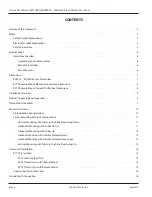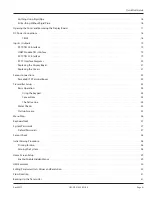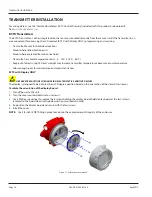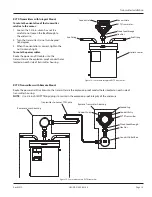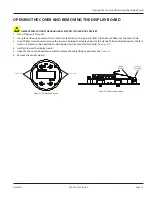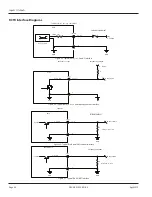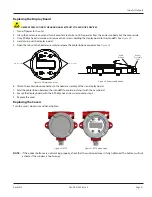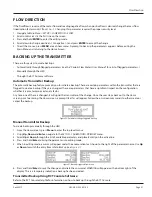
Locking the Transmitter Cover
To prevent the cover from loosening due to vibration, tighten the setscrew into the enclosure . See
To lock the cover on the transmitter housing, remove the setscrew and thread a customer-supplied chain or cable through the
setscrew hole and the hole on the nearest tab . See
Setscrew
Cable
Figure 20: Securing the enclosure cover
GROUND/EARTH CONNECTION
Earthing Using Rigid Pipe
FOR RCTX TRANSMITTERS, USE A POSITIVE GROUNDING RIGID PIPE CONNECTOR. THIS CONNECTOR ACTS AS A
PROTECTIVE GROUND AND MUST BE CONNECTED TO AN APPROPRIATE GROUNDING LOCATION.
EU Earthing Without Rigid Pipe
General
All wiring practices should comply to the NEC Article 500 or Canadian Electrical Code (CEC) Part I and Part II or
IEC 60079–14 as required by local and/or national codes .
Connecting or disconnecting devices:
• Make sure the supply voltage is switched off and the transmitter is in a non-hazardous area .
• Use connecting cables rated for a continuous service temperature of –10…95° C (Tamb max +20° C) .
• Use only certified (conforming to IEC 60079–14 Electrical Installations in Hazardous Areas) cable glands and conduit
hole plugs .
• Seal unused entry holes with approved sealing plugs that correspond to the type of protection NEMA 4 or IP-66 as
required for the installation area . The sealing plugs included with the transmitter meet this requirement and are compliant
to both standards .
Potential equalization (earth bonding)
As a condition of safe use, both an internal and external earth bond are required .
• Internal earth bond is made at the protective earth terminal on terminal block TB101 (for RCTX) . Earth bond conductors
must be the same gauge or larger than the power supply conductors .
• The external bond is satisfied by connecting the enclosure chassis through hard conduit or a ground lug .
Ground/Earth Connection
Page 16
April 2019
CRL-QS-01552-EN-05

